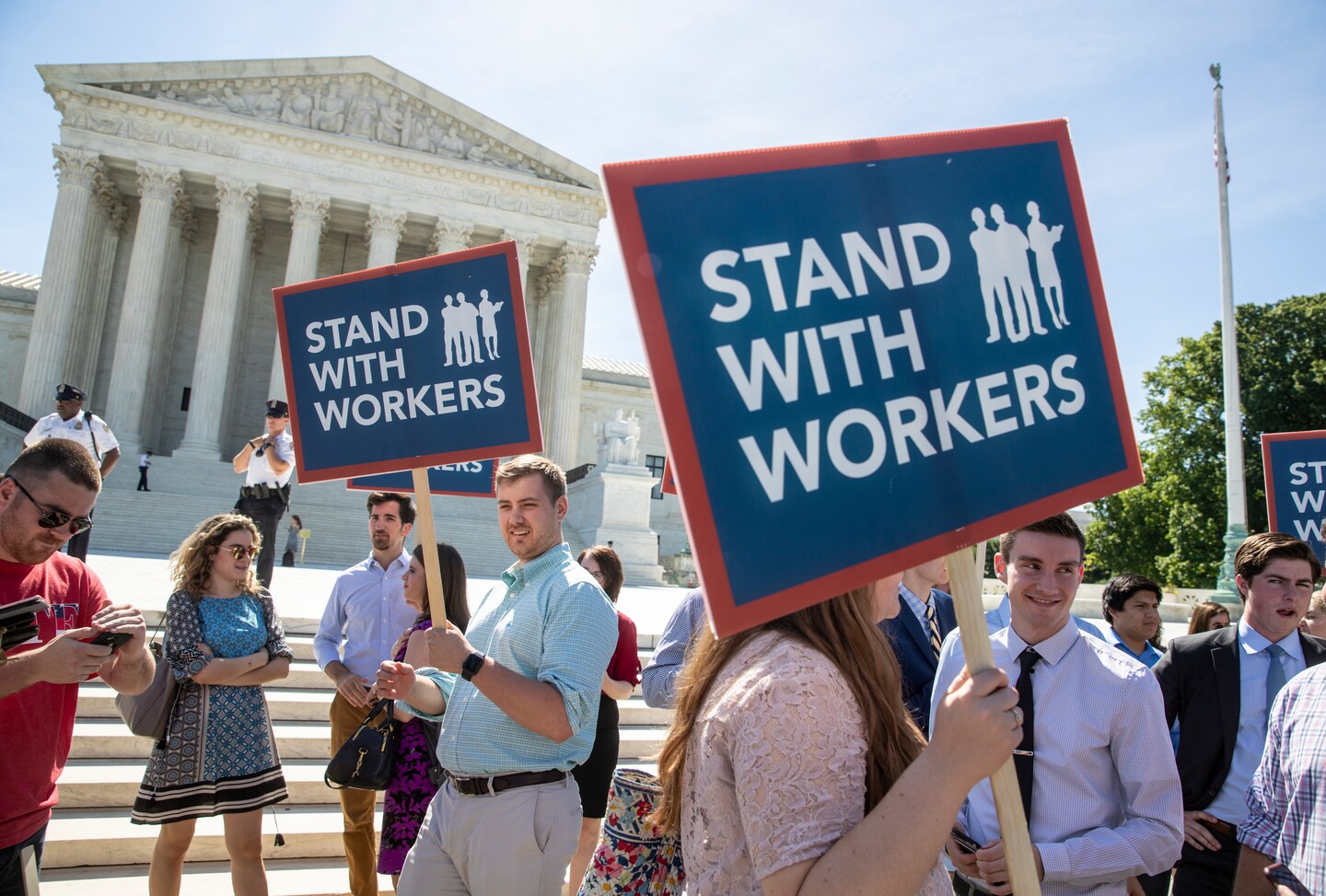For more than 40 years, a Supreme Court ruling from the 1970s had controlled a crucial area of constitutional law.
That time Alito overturned a long-standing precedent and — crickets

And yet, in the four years since Janus v. AFSCME, a landmark 2018 decision affecting the financing of public-sector unions, the ruling’s actual impact — to the extent it’s detectable at all — has validated neither the hopes of those who welcomed it nor the fears of those who did not. To the contrary, new research suggests the pre-Janus status quo remains remarkably unchanged.
Janus was never analogous, in potential impact, to Dobbs v. Jackson’s Women’s Health Organization, in which the current court is being asked to overrule the 1973 abortion rights precedent, Roe v. Wade. A five-justice conservative majority appears poised to do just that, based on the leaked draft opinion by Alito published by Politico last week.
The aftermath of Janus is nonetheless noteworthy, both on its own terms and as a reminder that — in the real world — even seemingly dramatic changes in Supreme Court doctrine sometimes don’t necessarily work out as anticipated.
The question in Janus was whether government employees could be made to pay an “agency fee” to the public-sector union that represented their workplace, even if they were not union members.
In 1977, the court had upheld agency fees as long as they were prorated to cover only union services, such as collective bargaining, not political activity — and thus did not compel speech in violation of the First Amendment.
By 2018, the law of 22 states allowed mandatory agency fees, based on this 1977 ruling, known as Abood vs. Detroit Board of Education. (The other 28 were “right to work” states that forbid mandatory dues or fees.) Bolstered by these obligatory payments, public-sector unions had grown into a well-funded progressive bulwark of the Democratic Party.
Conservatives targeted them, through legislation such as the 2011 Wisconsin law that hollowed out public-sector collective bargaining in that state, and through legal challenges to Abood. The opponents argued — not implausibly — that money is fungible, so there’s no meaningful distinction between a fee for union services and a contribution to union politics.
In 2018, the Supreme Court overruled Abood, with Alito writing that a mandatory agency fee “violates the free speech rights of nonmembers by compelling them to subsidize private speech on matters of substantial public concern.”
Both sides in Janus assumed that this could gut union membership and finances. Four years later, however, that hasn’t happened, according to a new study by political scientist Daniel DiSalvo for the Manhattan Institute, a conservative think tank.
Overall, public-sector union membership has remained roughly unchanged, DiSalvo writes, and it’s impossible to separate the influence of Janus from other factors, such as the ebb and flow of government hiring. Despite “initial losses of agency fee revenues, public unions have been able to stabilize their finances,” he notes. For example, AFSCME — the American Federation of State, County and Municipal Employees — took in $198.2 million from all sources in 2020, up slightly from about $197.5 million in 2018.
Data on dues specifically are scarce, but DiSalvo found that the National Education Association and American Federation of Teachers were able to collect more in 2021 than they did in 2020. Certainly, teachers unions remained strong enough to argue successfully for school closings in New York, Chicago and Los Angeles during the coronavirus pandemic.
A well-known critic of public-sector unions, who has argued that they raise the cost and lower the efficiency of government, DiSalvo told me during an interview that what Janus wrought was a “lower upper bound” on union finances — containment, not rollback. Absent far more radical, and unlikely, changes, such as the replication in other states of Wisconsin’s law, public-sector unions may settle into what he calls “a new equilibrium.”
Janus’s muted impact is in part a tribute to the unions’ own efforts. Anticipating that the justices would overrule Abood, they stepped up organizing and internal communication, to maximize voluntary dues payments. Workers “understand the value and power of being in a union, even if they don’t always agree with every position their union takes,” AFSCME President Lee Saunders told me.
In a third of the states affected by the ruling, DiSalvo reports, unions lobbied successfully for laws that help them retain dues-paying members.
In short, unions did not passively accept an adverse result but used other opportunities within the democratic system to advance their interests.
Again, overturning Roe is different: In addition to the profound moral and, particularly for women, personal implications, it would affect the law in all 50 states, not just 22, as Janus did. Yet, like Janus, it would transform — not end — a long political-legal struggle.






